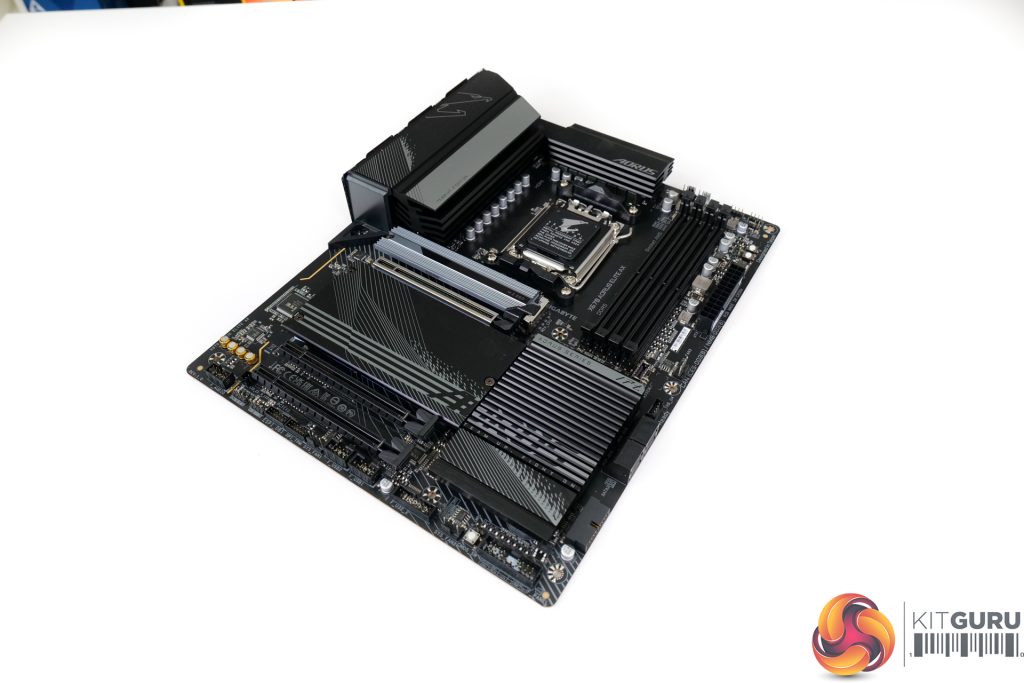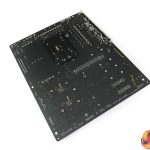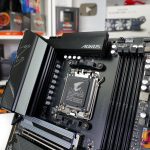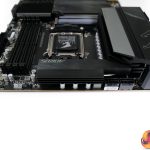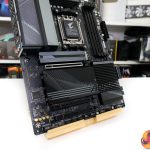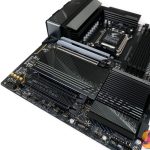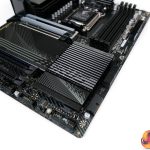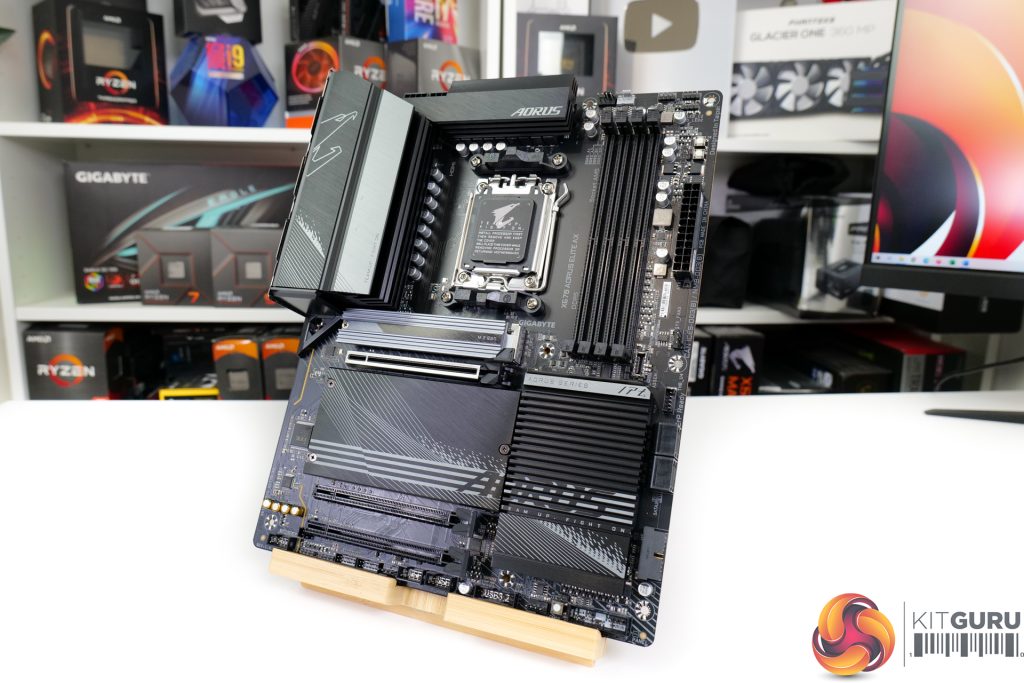But what if you want to spend even less money on a motherboard and aren’t bothered by support for a PCIe Gen 5 graphics card? Well, that’s where the £350 Aorus Elite AX comes into play.
Starting out with appearance, we see Gigabyte continuing the blacks and greys of typical Aorus styling. This time, the motherboard is offered up in the standard ATX form factor that is more sensible at this price point than E-ATX.
The heatsinks still focus on the logical areas very well. We get a sizeable slab for the X670 non-E chipset and this sits alongside a rectangular metal plate tasked with cooling three of the motherboard’s four M.2 connectors.
The top M.2 slots get its own cooling strip which is far smaller than the bigger Aorus boards, but should still suffice for handling an SSD.
VRM cooling is handled by two large aluminium structures, one of which overhangs the rear IO to act as a cover. These two individual heatsinks are connected via an 8mm heatpipe as to share thermal load between them.
The difference here is that Gigabyte opts for a bulky structure instead of a fin array. That should be fine for a motherboard of this market positioning, whereby ludicrous overclocking on fancy liquid cooling is an unlikely use case. Plus, the heatsink are actually very large and designed with some surface area enhancements.
The power delivery setup is built around a Twin 16+2+2 digital VRM design. The power stages for the VCore are 70A-rated and this is all put together on the 8-layer copper PCB.
Focusing on the slots, we get four total M.2 connectors once again. But this time, one of those is PCIe Gen 5 x4 and the other three are PCIe Gen 4 x4.
The steel-plated expansion slot for a graphics card is now rated as PCIe Gen 4 x16 and that’s one of the key differences between X670 and X670E chipset motherboards.
Gigabyte also switches up the PCIe EZ-Latch Plus push-button system to an extended tab near the actual slot instead.
Good to see is the USB Type-C internal front panel header on this motherboard. Gigabyte keeps it running at 20Gbps speed too, which is great.
Now we get four SATA 6Gbps ports, but coupled with quad M.2 slots, that’s probably fine.
And we get five 4-pin fan headers spread around the board, as well as five RGB connections. One area that impressed me is Gigabyte’s continued inclusion of onboard power and clear CMOS buttons.
If you like USB ports, you’ll love this rear IO selection. There’s a truck load of Type-A ports in addition to the single 20Gbps Type-C. Video output comes in the form of HDMI, though there’s only the single display output.
And networking connectivity is the ideal mainstream setup – 802.11ax WiFi 6E and 2.5 Gigabit Ethernet. The Q-Flash Plus port is there for useful BIOS upgrade options too.
Gigabyte’s X670 Aorus Elite AX is a sensibly-priced mainstream offering which retains a whole host of healthy features. Quadruple M.2 slots, a beefy VRM setup, and dual 20Gbps USB-C connectivity.
Yep, we can imagine this board will tick quite a few boxes at £350.
 KitGuru KitGuru.net – Tech News | Hardware News | Hardware Reviews | IOS | Mobile | Gaming | Graphics Cards
KitGuru KitGuru.net – Tech News | Hardware News | Hardware Reviews | IOS | Mobile | Gaming | Graphics Cards


